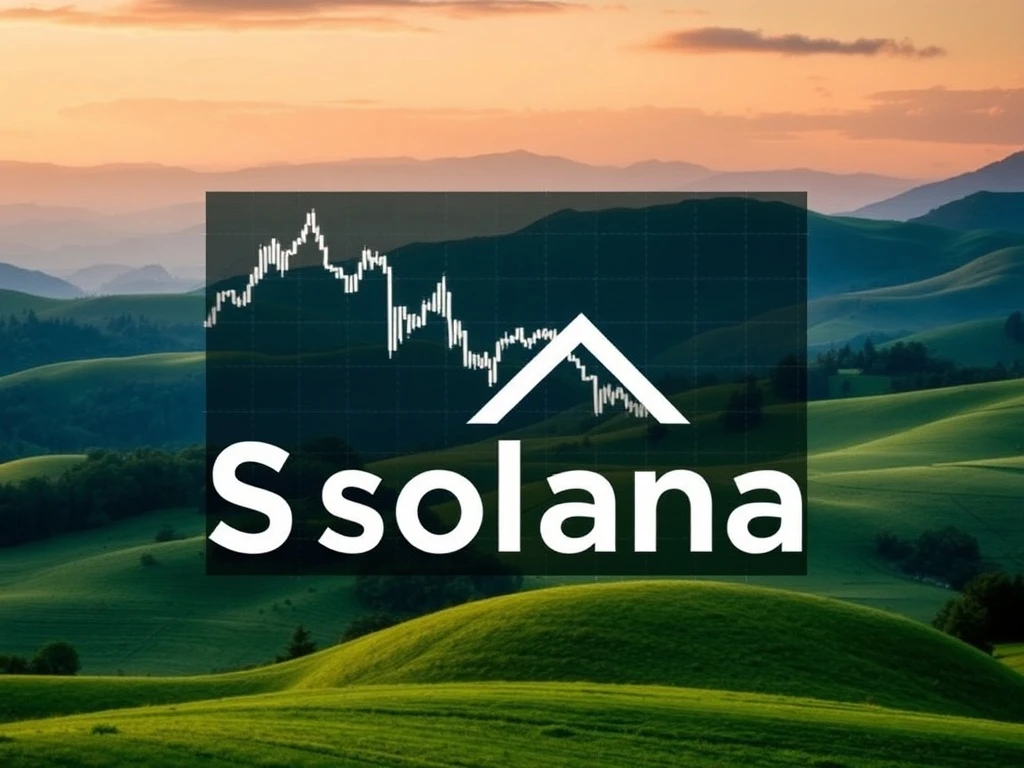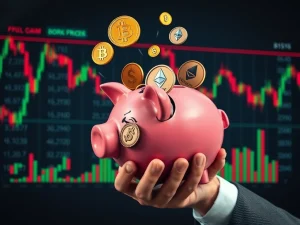SOL Price Faces Alarm as Negative Funding Rate Hits Solana

The crypto market is buzzing, but for Solana (SOL) holders, the recent shift in market indicators suggests caution. The SOL futures funding rate has turned negative, a signal that leveraged traders are betting against the price. This development raises questions about the immediate future for the popular altcoin and whether the ambitious $180 SOL price target is still within reach.
Understanding the Negative Funding Rate
The perpetual futures funding rate is a key indicator in the crypto market. It represents payments exchanged between long and short position holders in perpetual futures contracts. A positive funding rate means longs pay shorts, indicating bullish sentiment. A negative funding rate, as seen recently with SOL, means shorts pay longs, suggesting bearish sentiment or a lack of confidence among bullish traders.
- A negative funding rate indicates higher demand for short positions.
- This is relatively uncommon in typically optimistic crypto markets.
- It signals a broad lack of confidence among bullish investors betting on SOL.
Solana’s Competitive Landscape and Institutional Hurdles
While Solana boasts a fast network and integrated user experience, it faces increasing pressure. The expansion of Ethereum’s layer-2 ecosystem presents significant competition. Furthermore, recent reports highlight institutional players avoiding Solana due to concerns over Maximum Extractable Value (MEV) and the desire for more validator control.
Forrestnorwood from Conduit noted that both Coinbase and Robinhood reportedly preferred the transaction ordering guarantees on their own L2s, opting for maximum control. Vlad Tenet, CEO of Robinhood, reportedly mentioned dismissing building on Solana due to MEV concerns.
These institutional hesitations, if they continue, could limit the upside potential for the SOL price.
Behind the Headlines: Solana’s Fundamental Strengths
Despite market sentiment challenges, Solana demonstrates strong underlying fundamentals. SolanaFloor reported that Solana led all blockchains in network revenue for the third straight quarter.
In Q2 2025, Solana generated significant revenue, reportedly outpacing Ethereum and Tron. Its DApp ecosystem also shows vitality, with users spending hundreds of millions in fees over 30 days. This activity suggests a healthy network attracting developers and users beyond just token launches.
Key strengths include:
- High network revenue, leading competitors in Q2 2025.
- Robust DApp activity with substantial user fee generation.
- A high staking ratio (66.5%) compared to Ethereum (less than 30%) and Cardano (58%), reducing circulating supply.
- Attractive annualized staking yield (7.3%).
Even criticisms regarding failed transactions are seen by some as optimization opportunities resulting from deliberate design choices rather than structural flaws.
What the Negative Sentiment Means for SOL Price Targets
The combination of a negative funding rate and institutional caution casts doubt on short-term bullish predictions. The SOL price has struggled to reclaim the $180 level seen in late May.
The reduced demand for leveraged long positions directly impacts market momentum. While fundamentals remain strong, the market sentiment and perceived institutional hurdles currently weigh on the SOL price outlook.
Broader Crypto Market Sentiment Influence
Solana’s performance is also influenced by the overall crypto market sentiment. A widespread downturn or shift in investor risk appetite can impact even fundamentally strong projects. The current cautious mood reflected in SOL’s funding rate may be indicative of broader market trends or specific concerns related to Solana’s competitive position and institutional adoption challenges.
Conclusion: Mixed Signals for Solana
The negative SOL futures funding rate highlights a clear lack of short-term confidence among traders. This bearish signal, combined with institutional hesitations regarding MEV and control, presents significant headwinds for the SOL price. However, Solana’s strong fundamentals, including leading revenue generation, active DApp ecosystem, and high staking participation, offer a counter-narrative. The path to reclaiming levels like $180 remains uncertain, contingent on shifting market sentiment, resolving institutional concerns, and the broader direction of the crypto market sentiment.








